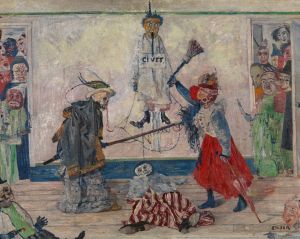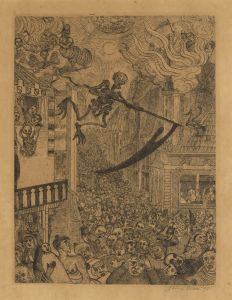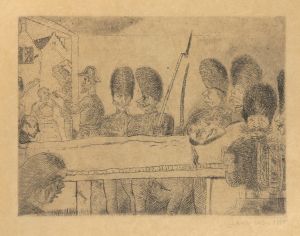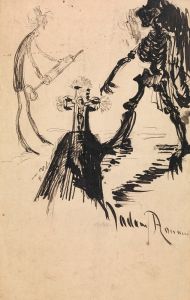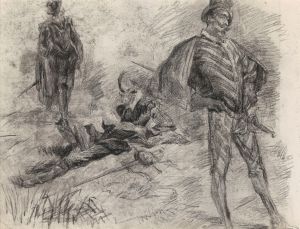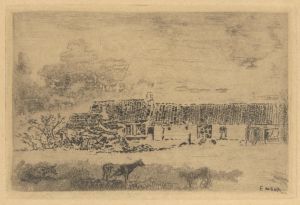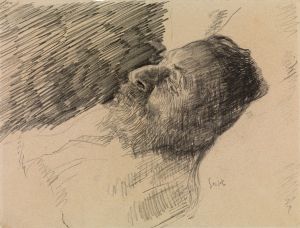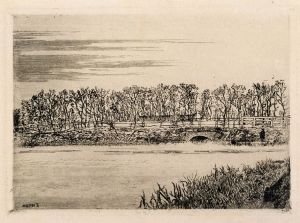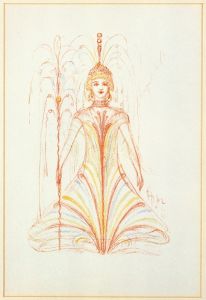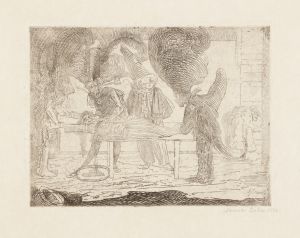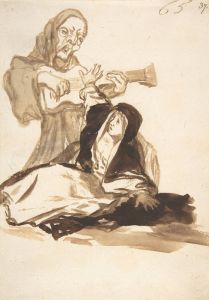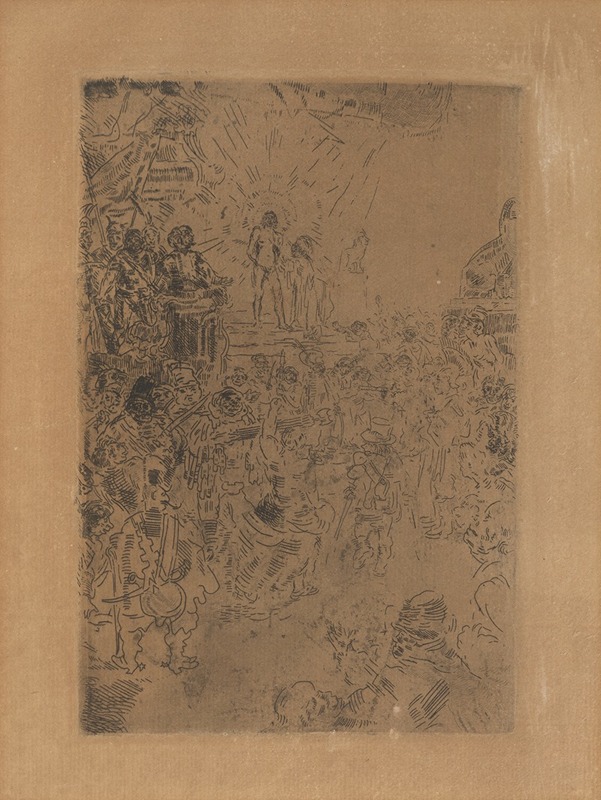
De bespotting van Christus
A hand-painted replica of James Ensor’s masterpiece De bespotting van Christus, meticulously crafted by professional artists to capture the true essence of the original. Each piece is created with museum-quality canvas and rare mineral pigments, carefully painted by experienced artists with delicate brushstrokes and rich, layered colors to perfectly recreate the texture of the original artwork. Unlike machine-printed reproductions, this hand-painted version brings the painting to life, infused with the artist’s emotions and skill in every stroke. Whether for personal collection or home decoration, it instantly elevates the artistic atmosphere of any space.
"The Mocking of Christ" (Dutch: "De bespotting van Christus") is a significant painting by the Belgian artist James Ensor, created in 1886. Ensor, born in 1860 in Ostend, Belgium, is renowned for his unique and often provocative style that blends elements of symbolism, expressionism, and surrealism. His works frequently explore themes of satire, grotesque imagery, and the human condition, and "The Mocking of Christ" is a prime example of these themes.
This painting is notable for its vivid and chaotic depiction of the biblical scene where Christ is mocked by soldiers before his crucifixion. Ensor's interpretation diverges from traditional representations by infusing the scene with a sense of modernity and personal symbolism. The composition is crowded with figures, creating a sense of claustrophobia and intensity. The faces of the tormentors are exaggerated and mask-like, a recurring motif in Ensor's work that symbolizes the hypocrisy and cruelty of society.
Ensor's use of color in "The Mocking of Christ" is particularly striking. He employs a bold palette, with stark contrasts between light and dark areas, to heighten the emotional impact of the scene. The central figure of Christ is depicted with a serene and resigned expression, standing in stark contrast to the grotesque and animated figures surrounding him. This juxtaposition emphasizes the isolation and suffering of Christ amidst the chaos.
The painting reflects Ensor's deep engagement with religious themes, but it also serves as a critique of contemporary society. Ensor was critical of the bourgeoisie and the established social order, and he often used religious imagery to comment on the moral and ethical failings he perceived in his time. "The Mocking of Christ" can be seen as a reflection of Ensor's disillusionment with humanity and his belief in the enduring relevance of Christ's suffering.
"The Mocking of Christ" is housed in the Royal Museum of Fine Arts in Antwerp, Belgium. It is considered one of Ensor's masterpieces and a pivotal work in the development of modern art. The painting's innovative use of color, composition, and symbolism had a profound influence on subsequent generations of artists, particularly those associated with the expressionist and surrealist movements.
James Ensor continued to explore similar themes throughout his career, and his work remains influential and highly regarded in the art world. "The Mocking of Christ" stands as a testament to his unique vision and his ability to convey complex and often unsettling ideas through his art.





